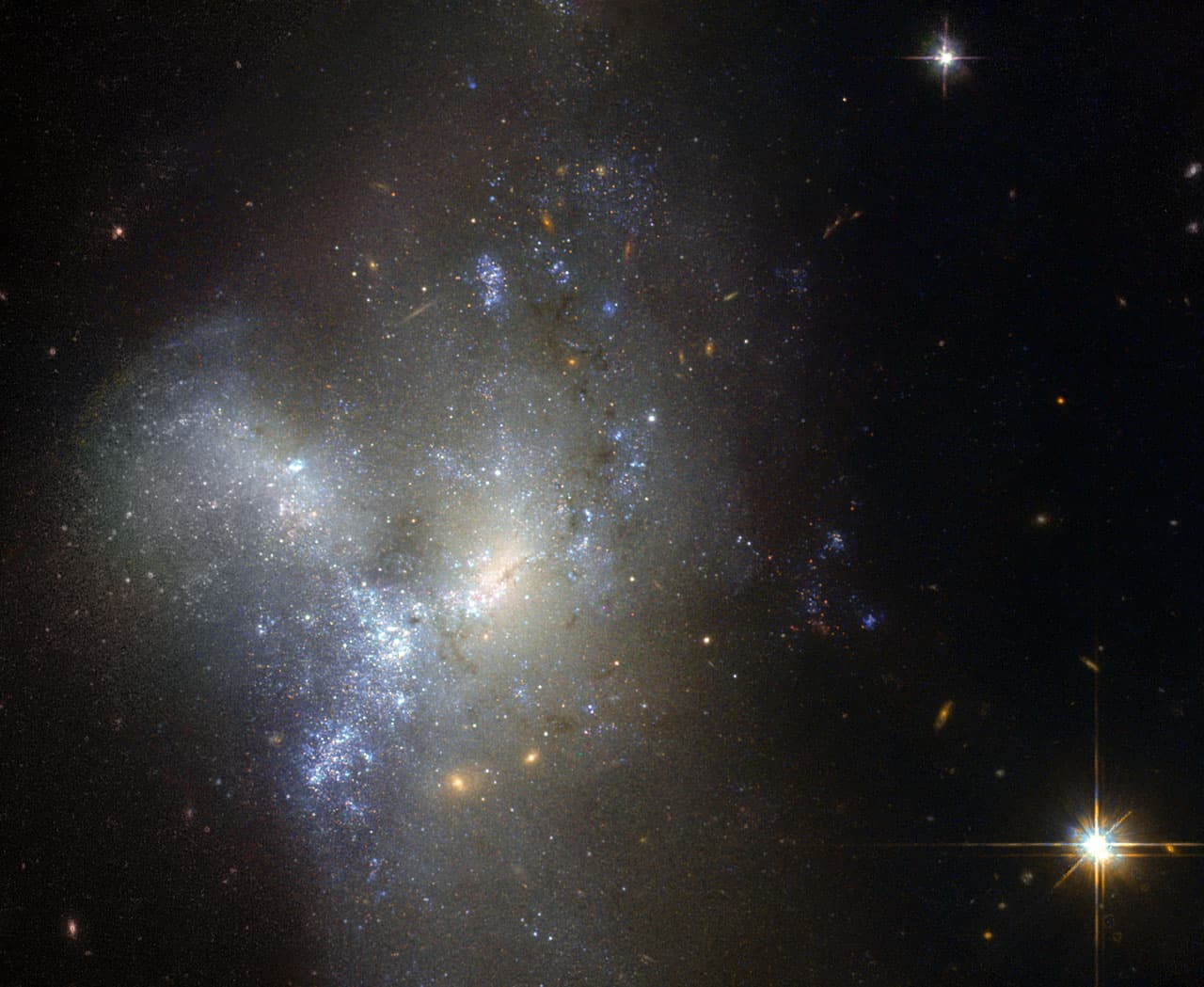This image, taken by the NASA/ESA Hubble Space Telescope, shows a peculiar galaxy known as NGC 1487, lying about 30 million light-years away in the southern constellation of Eridanus.
The wonderful thing about astronomy is that you might discover amazing things even when you’re not looking for them. This is the case for a team of Australian astronomers who were testing a new radio telescope and stumbled on an incredible finding.
The researchers discovered a 3.8 billion solar-mass black hole at the centre of galaxy IRAS 20100-4156 which is a three galaxy merger system almost 2 billion light-years away. The telescope detected the radio wave emission from the gas flung out by the black hole. The speed of the outflow, at over 1600 kilometres per second, strongly suggests that a monster is hiding at the core of the galaxy.
“The really exciting thing about this is it is a direct measurement of the mass of the black hole by stuff that’s swirling around it,” lead author Dr. Lisa Harvey-Smith told ABC Australia.
“NOT EVEN MY FINAL FORM”
A great thing about the whole discovery is that the radio telescope is not even completed!
“The full 36 antennas will be online by 2018,” Dr Harvey-Smith says. “We currently have nine antennas doing commissioning and testing, and our early science programme will begin when we have 12 antennas ready.”
The paper describing the finding is published in the Monthly Notices of The Royal Astronomical Society and can be read here.

